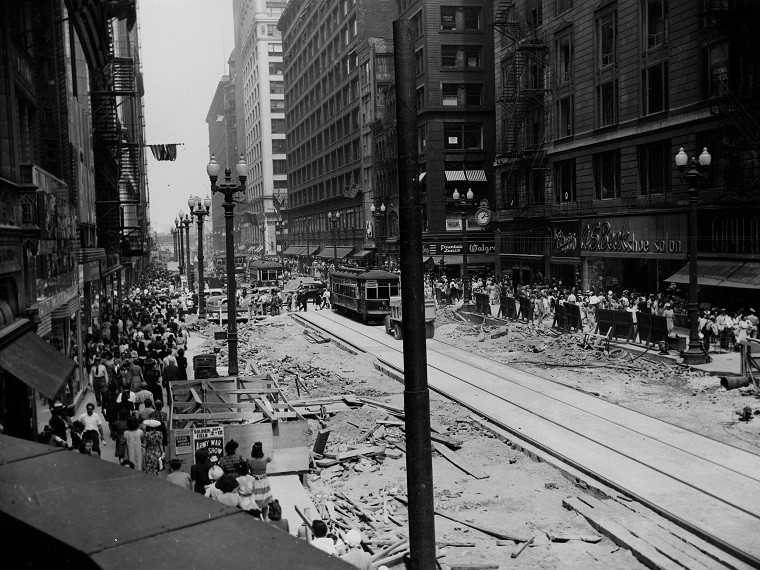Although massive in scale, Chicago is a city with remarkably few degrees of separation. Just as the year's One Book, One Chicago selection connects diverse readers across the city to threads of history, the book, Thomas Dyja’s The Third Coast, opens its first chapter by stitching together the overlapping paths shared by architect Ludwig Mies van der Rohe and future Illinois Poet Laureate Gwendolyn Brooks.
In 1938, Brooks worked in the Mecca Flats, located at State and 34th streets in the neighborhood popularly known as Bronzeville. That same year, a trustee from Armour Institute of Technology (now Illinois Institute of Technology), van der Rohe’s new employer, purchased the property. The run-down Mecca Flats would eventually be transformed into today’s Crown Hall by the signature Modernist, van der Rohe, and its human spirit captured in the writings of Brooks.
Despite the lingering gloom of the Depression, other Chicagoans shared the city’s potential for renewal and new connections. Dipping into the Special Collections and Preservation Division archives, we find that in 1938 the State Street Subway was at last underway thanks to a grant from the Works Projects Administration.
The many groups that applauded this work were also busy advocating for slum clearance, particularly the State Street Council, whose annual report reprinted the 1938 Chicago Commission Plan’s map that highlighted Chicago’s “No. 2 Major Problem:” blighted areas south of the Loop. Bronzeville’s Mecca Flats and Armour Institute were at the heart of that map. As Dyja shows, two blossoming artistic movements with different views of Chicago renewal would soon interconnect in the figures of Brooks and van der Rohe.
Find more information about Gwendolyn Brooks in the George Cleveland Hall Branch Archives and other collections at the Vivian G. Harsh Research Collection.



Add a comment to: Seven Degrees of Chicago, 1938